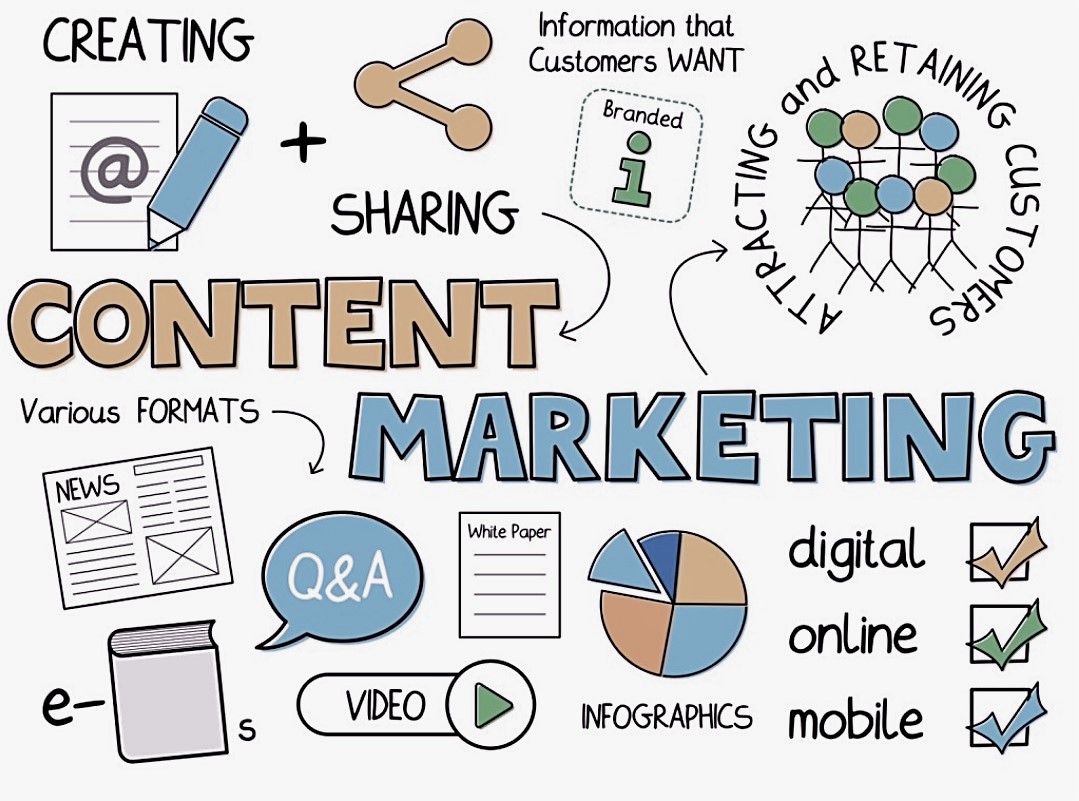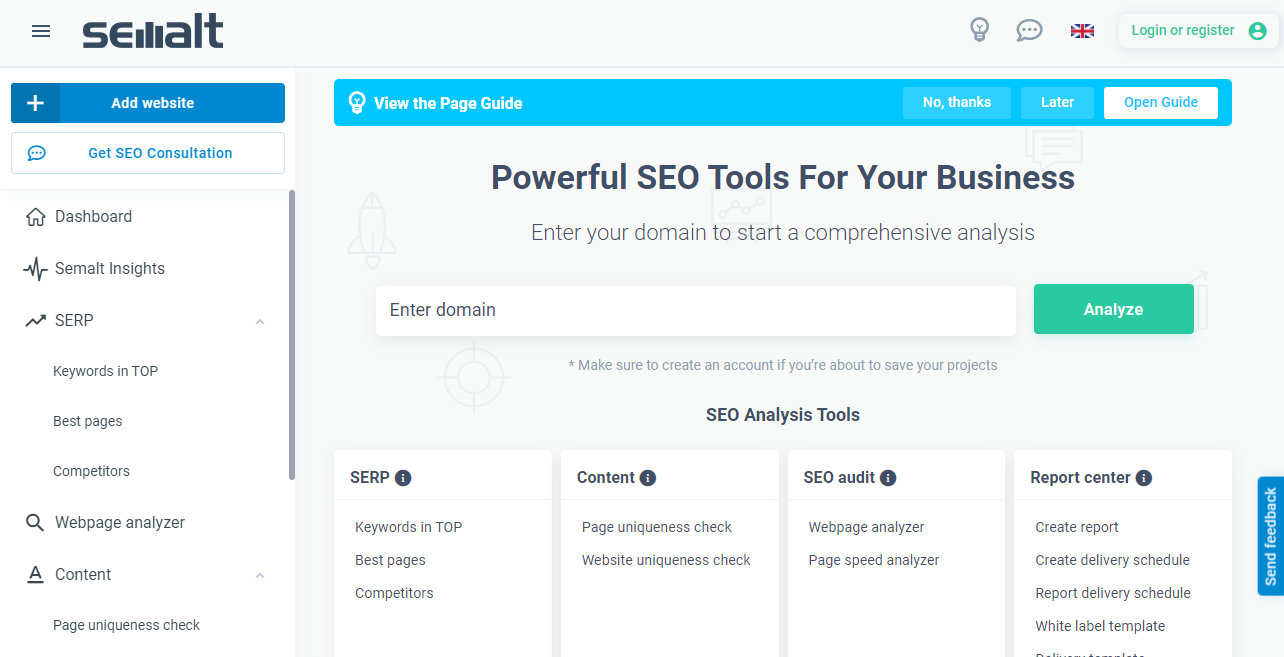Semalt Content Marketing: Why Is It Worthwhile To Have A Content Strategy?

Content marketing is about developing and sharing useful and interesting ideas on the Internet with your target group. The content you create should facilitate the conversation between the information you publish and the needs of your customers. Regardless of the medium you choose, your content must generate value for its audience.
Unique content is essential for local businesses, whether it's in the form of videos, blogs, articles, or newsletters.
If you create quality content but fail to promote or manage it, you reduce the chances of increasing your online visibility, which is essential for small businesses. If you run a local business, you need a content strategy. What will convince a user to look at your content over your competitor's if they can find so much information on the internet?
Our guide today will be devoted entirely to the right strategy, which consists of planning, developing, and managing content that your website will carry and promote.
Building a content strategy

Creating valuable content on the Internet means creating something timeless. Timeless can be a general help page, a how-to article, a list-based article, or a FAQ.
Think about what people will still be searching for on Google three, five, or ten years from now, such as "How to tie a tie in 5 steps."
Many marketers describe this type of content as timeless, the kind that will always be popular. Nick Eubanks' case study helps you understand the true power of non-aging content.
The aforementioned article on tying a tie in a few steps is an example of such "evergreen" content, as it features content that will continue to be relevant for the foreseeable future. On the other hand, a timely article that will only be relevant for a short period, such as a review of a local concert, is relevant at the time of publication - and will be relevant and current only shortly afterward.
By creating content that is relevant for the future, you provide useful information with lasting value.
As the author of such timeless content, you become recognized both nationally and in the local community, but as a small business owner, you'll also need to optimize your website for local searches.
Remember, what's hot this year may be outdated next year. However, there are some simple rules you need to follow if you want to create great new content.
With the right strategy, you can remain an important player in your market for years to come.
Base your content on research
In a survey by Gleanstar Research and Kapost, 90% of marketers felt they were the least effective in the area of useless content.
The study showed that inefficiency is the number one problem for marketers and that deadlines are the area where they are the worst. Good content marketing is not just about writing for Google and the search engines - it's about bringing value to the target group.
When analyzing keywords, think about the phrases that customers (or potential customers) may type in when searching for your product or service. Such keyword researches are very simple. All you have to do is to use keyword analysis tools, such as the Dedicated SEO Dashboard, which you can use for free for a while ;)
The Dedicated SEO Dashboard is also a useful tool that you can effectively integrate into content marketing. Select the keywords you want your content to appear in the search engine, enter them into the tool and wait for the results page to appear. These results are the number of queries per month that include the selected words and similar phrases on which you can rank your content. In addition, you can enter the words you want to appear in Google's search results to see what your competitors are doing to appear there and their promotion strategy. This is one of the key benefits of this tool.
Competitive analysis

By analyzing your sites with the best visibility and traffic, you will know which phrases to implement.
However, don't overload your content with keywords. Gone are the days when finding a keyword or keywords and publishing them without thinking drove traffic to your page (even if the words weren't quite right). A keyword occurrence rate of more than 5.5% puts you among the victims of keyword stuffing. This can result in a website penalty from Google.
You may be the most knowledgeable person in your niche, but that doesn't mean you no longer need to research new trends and learn more about the algorithm. You need to be fully aware of Google's updates.
Research is an important part of your content marketing strategy. Whether you're looking for the best way to reach a specific target group or analyzing key phrases for SEO, research is an ongoing process.
From content marketing to SEO
Carefully creating valuable content can help users contact you online. In fact, local SEO and content marketing go hand in hand.
No matter how big or small your business is, you need to have a steady stream of content that shows up in local results. In order to rank in search engines, you need to implement the key phrases mentioned above into your content, whether you're preparing a short blog post or a lengthy case study. In both cases, the content will count.
You need to think like your customers and choose effective local keywords that will make up your search queries.
Unfortunately, you won't get far with your site if users can't find you online. For your content to show up in search results, you must use SEO.
To be visible to your target group and attractive to potential customers, you need to integrate SEO into your (especially local) content marketing techniques.
Analyze your audience
Just as you shouldn't assume you know everything about the needs of your target group, you shouldn't assume you know how your audience consumes your content. It's important to always research your users to see what they prefer in content.
Always use research and social media to find out what users need and want to know about your business. For example, check what type of content your recipients are most willing to share - whether it's photos, lists, blog posts, videos, or infographics.
For audience research, you can use the SEO Dedicated Dashboard tool to simplify and speed up your analysis.

So you already know how and why recipients use your product, now find out how they consume your content. Should you fill your content with industry jargon? Or maybe include more photos and videos? Find out if your users prefer to read quick, informative three-minute articles or if they prefer long 2,000-character forms filled with informative quotes, detailed descriptions, and just a few images.
With that in mind, keep an eye on your site's analytics. Content marketing is also about the regular analysis of your content to see what works in your favor and what doesn't. If your audience isn't able to watch your ten-minute video tutorial, find out if they like, forward and comment on shorter videos.
Use original headers
This is extremely important in mass communication. Ever wanted to click on a link with a simple, boring header? It's like judging a book by its cover - there's no escaping it.
In the world of content marketing, unique headers are still the best way to get noticed. First of all, headers should be relevant to the keywords you choose - after all, they will appear first in search results.
Another thing is header uniqueness: if it's not unique, your article will have a hard time staying in the SERPs, even when the user searches word for word for the title.
Think of it this way: if you're searching for something or buying something online, do you click on a title that doesn't catch your eye? Not likely. It doesn't matter how interesting your article is - if it doesn't have a tempting title, users will ignore it and click on another link with a title that interests them.
Don't generate content... Create it

No one wants to read something they've encountered many times before. All it takes is one weak article or publication to lose your audience and your valuable customers. Don't write for the sake of writing - take your time, do your research and consult with others before publishing.
That doesn't mean, however, that you can't create a lot of content while you wait. There is a lot of marketing potential in the day-to-day running of a business. Remember, there is a lot of content you can use in your content marketing. You can write FAQs and use them to answer the most common questions customers ask in your guide articles (you can also make a video of this material).
If you're writing about something people have already read, do it differently. Originality is the key to success in content marketing. Tell a personal story, prepare a case study, or write an FAQ-based article focused on your readers' problems.
Write so that your content can be shared with others
Another great way to enhance your content is to write it in a "shareable" form. You can do this by writing detailed and informative content, highlighting relevant information, and adding lots of words and images.
Make sure people share your content - place social media buttons where users can easily notice them. Remember, sharing your content is what content marketing is all about.
If you place the share button in a visible location, the reader will share your text on social media, extending the reach of the content's impact to their friends and subscribers.
There is a plethora of poor-quality content online, so try to create valuable and thought-provoking content that people will want to share with others.
Be an educator and teacher, not a mass producer of low-quality articles.
Get online reviews from your trusted fans
Create a business card on Google My Business. This is of great importance for local search results. What exactly is a Google My Business page? This Google service allows you to manage the online presence of your business.
If you locally search for services or addresses, for example, by typing "pizza in Kyiv", your company's Google My Business page (as well as your competitors' pages) appears in the local search results.
With Google My Business, you present your brand in a slightly different light. You can build your brand's reputation by posting business photos and allowing users to leave reviews about your services.
When customers write reviews, you can communicate directly with them, answering their questions, comments, and concerns. People can't usually rate your website directly, they can only fill out a contact form or send an email with inquiries. With Google My Business, users can rate your services/products directly, and you can also communicate with your recipients.
In fact, a 2014 survey by Search Engine Land found that 88% of customers read online reviews to assess the quality of their local business. The truth is that many users trust the reviews they read online, as well as personal recommendations. Trust comes with positive opinions. Trust comes with a good brand reputation!
Content marketing: some final words!
Content marketing is a much more complex task. One of the best (and most important) things you can do for local SEO is to consistently and accurately place information about your business in as many appropriate places as possible. Most importantly, the NAP (name, address, phone) should be consistent throughout the site.
If you are putting content that reaches people in the local market, add NAP to the end of your message or in the footer of your email. With a methodical approach to keeping your information consistent, you will have a positive impact on your local SEO.
Besides including the NAP and company information in your page content, it is also useful to have consistent entries in the major industry directories that Google and other search engines will refer to when assessing the credibility of your website.
The process of creating professional entries can be cumbersome and methodical, so you may be tempted to outsource the activities and build the SEO from the references while focusing on the content.
With content that is analyzed, ready to be shared, and optimized for SEO, you are on your way to commercial success. But SEO is not just about finding the right keywords and writing accordingly. If you don't create meaningful or at least interesting content, users won't pay attention to it, even if it is easy to find online.